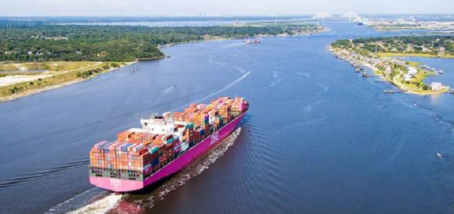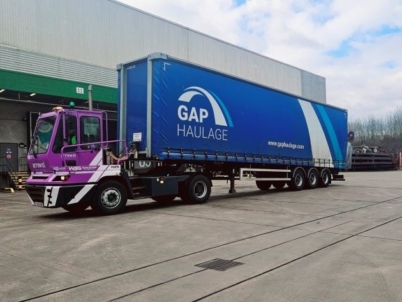-
Nutrivend selects Forterro’s Orderwise to support online expansion and streamline operations - April 11, 2025
-
ARROWXL LAUNCHES AMBITIOUS ZERO WASTE ROADMAP - April 8, 2025
-
THE BCMPA’S NEW CAMPAIGN DRIVES OUTSOURCING SUCCESS IN Q1 - April 7, 2025
-
BLACKOUT TECHNOLOGIES TARGETS TELEMATICS-INTEGRATED MOBILE DEVICE BLOCKING TO COMBAT SMARTPHONE DISTRACTION - April 1, 2025
-
OpenADR Alliance announces first OpenADR 3.0 certified products with EVoke Systems, E.ON Energy and Universal Devices - March 25, 2025
-
Growing fulfilment and contract packer appoints new Managing Director - March 25, 2025
-
When is it time to invest in a WMS? Understanding the key trigger points - March 25, 2025
-
eCapital helps Vantage Recruitment on its journey to financial success - March 24, 2025
-
Hugo Beck Celebrates 70 Years of Packaging Innovation with Open House Events - March 20, 2025
-
PROLOG FULFILMENT SUPPORTS LUNA DAILY’S COMMITMENT TO BETTER BODY CARE FOR ALL WOMEN - March 19, 2025
The margin of error in the supply chain continues to shrink as industry giant Walmart announced in September new key performance metrics for on-time delivery. In a memo posted on its online supplier portal, the company stated beginning Sept. 15, suppliers will be required to deliver inventory to distribution centers on time and in full 98 percent of the time. This is an increase from Walmart’s previous 87 percent delivery performance metric.

The change in delivery standards comes as no shock as retailers look to meet consumer expectations for next-day and in some cases same-day delivery. It’s a trend other major retailers are likely to follow, said Jacksonville Port Authority (JAXPORT) Director of National Container Accounts Aisha Eccleston. “We have seen this before in other aspects of ecommerce and retail operations – when a leader in the industry evolves, it tends to have a ripple effect,” she said.
Significant changes in performance metrics require suppliers and other retailers alike to take a hard look at their supply chain.
And while many will focus on the final mile component, Eccleston says finding efficiencies goes beyond that segment. “Port selection is crucial,” she said, “as it sets your supply chain up for success, especially for those ecommerce retailers looking to execute next day delivery.”
From the production source to the targeted consumer, Eccleston says there are four ways U.S. port selection can speed up your ecommerce supply chain.
Global Options with Fast Transit Times
In response to trade tariffs and the coronavirus pandemic, retailers are adopting a “China Plus One” sourcing strategy – one that includes more Asian and European markets according to a new CBRE study. Selecting a port with diversity in its ocean carrier options is key. “A port partner with a variety of ocean carrier services to markets around the globe ensures that as retailers modify their sourcing strategy, they can quickly adapt their ocean transit without a major change to their supply chain,” Eccleston said.
JAXPORT offers services to more than 140 ports worldwide, offering connectivity to the areas benefiting the most from the shift in sourcing, such as Vietnam and Thailand aboard The Alliance’s EC5 service. This is just one of multiple options shippers can use at JAXPORT for their import volumes, Eccleston said.
Proximity to Consumers
The World Population Review reports there are more than 97 million people living in the Southeastern United States with Florida accounting for nearly 22 million of those residents. Florida’s population is only expected to grow – with a projected population of 26.5 million people by the year 2030, according to the Bureau of Economic and Business Research (BEBR) at the University of Florida.
By selecting a port in the heart of the South Atlantic, ecommerce shippers can strategically position their cargo in the epicenter of the fastest growing consumer market in the Southeast U.S. This deliberate placement of cargo on the front end of the supply chain can cut days off delivery times in the final mile.
With its strategic location as well as rail and highway connections, shippers using JAXPORT are quickly delivering their product to key markets such as Orlando and the rest of the I-4 corridor, Atlanta, Memphis, Chicago and more. “For one online furniture retailer, a distribution center in Jacksonville reduced delivery times to the Southeast by three days,” said Eccleston.
Velocity of Containers through the Port
“Another important factor is port efficiency,” said Eccleston. This segment of the supply chain is critical and many factors play a role such as port congestion, terminal operator performance, and traffic flow in and around the port.
From the time the vessel arrives at the sea buoy to the time the container leaves the terminal – the velocity of cargo through the port can either support an efficient supply chain or hinder it. Shippers should take all these factors into consideration when selecting a port of entry, says Eccleston.
JAXPORT’s largest terminal is located 12.5 nautical miles from the sea buoy and its channel offers freedom of movement for vessels – speeding up arrival to port and discharge of cargo. The port also offers fast turn times, low congestion at its three container terminals and proximity to major interstates.
Partnerships with Logistics Experts
From third-party logistics providers to parcel delivery partners – an efficient supply chain requires a high level of expertise, “especially in today’s climate where retailers are shifting operations to adapt to ecommerce demands,” says Eccleston.
Consumer trends are transforming retailers’ supply chains, and Jacksonville’s transportation and logistics ecosystem is helping shippers optimize their networks, according to Eccleston. “We have seen a national handbag brand partner utilize a local 3PL to assist with inventory management during COVID-19, as well as brands developing a custom pick strategy with JAXPORT’s terminal operator to speed up delivery of containers to their DC.”
As suppliers and retailers continue to respond to evolving industry standards and consumer expectations, selecting the right port of entry is one of the drivers of success. “With peak season on the horizon – now is the time for brands to take a hard look at their supply chain,” said Eccleston, “so you can increase efficiencies on the front end of your operations to improve on-time delivery.”
Connect with Aisha today to learn more about JAXPORT and how the region’s transportation and logistics network can help your retail operation speed up delivery.
In October JAXPORT will host an online event and dive deep into what drives ecommerce logistics success with industry experts. Learn more.

































